We Spent A Day In The Vermont Woods To See Why Foraging Is The Next Frontier In Fine Dining
Chef René Redzepi of Copenhagen's Noma is credited with elevating field-to-table fare and inspiring the foraging craze at restaurants around the world. The restaurant's foraged feasts, which feature ingredients like moss and pine, cost $300 a head.

Foraging, or the act of scavenging for food in the wild, minimizes the number of hands that touch ingredients before they land on a plate. Some say once you experience how food is "supposed to taste," you’ll never want to eat a cultivated mushroom or farmed strawberry again. It's that much better.
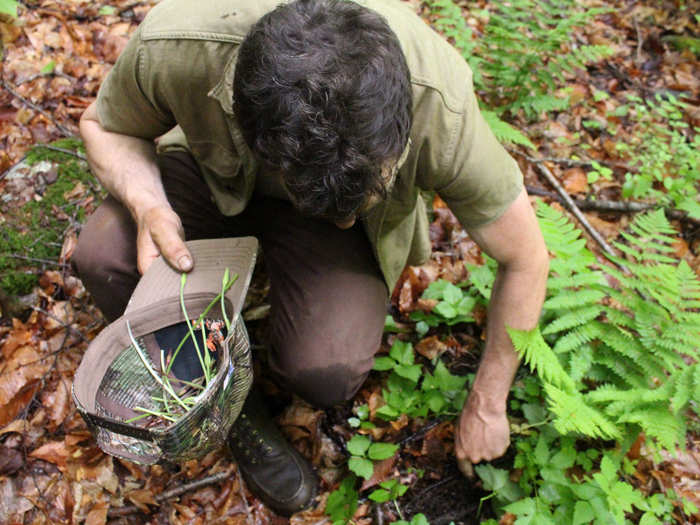
The “Noma-fication of things” is in full swing in New York City, where restaurateurs are clamoring to differentiate themselves from the slew of so-called farm-to-table eateries. Field-to-table is the new frontier.
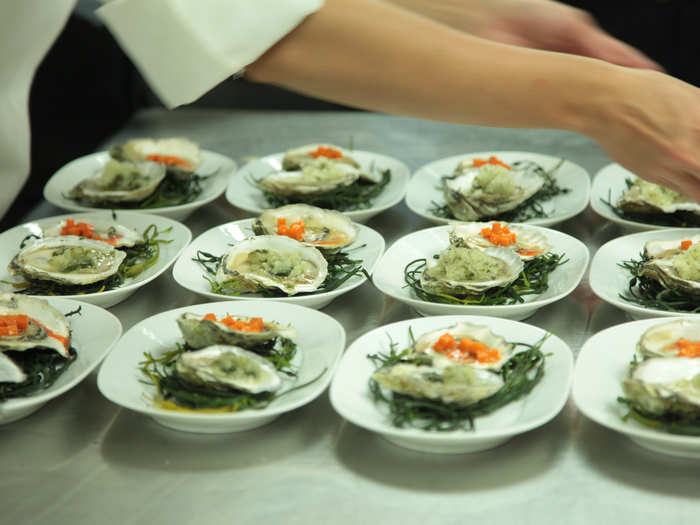
We recently followed master forager Evan Strusinski and Clement head chef Brandon Kida into the Vermont woods to see what the foraged-food movement is all about.
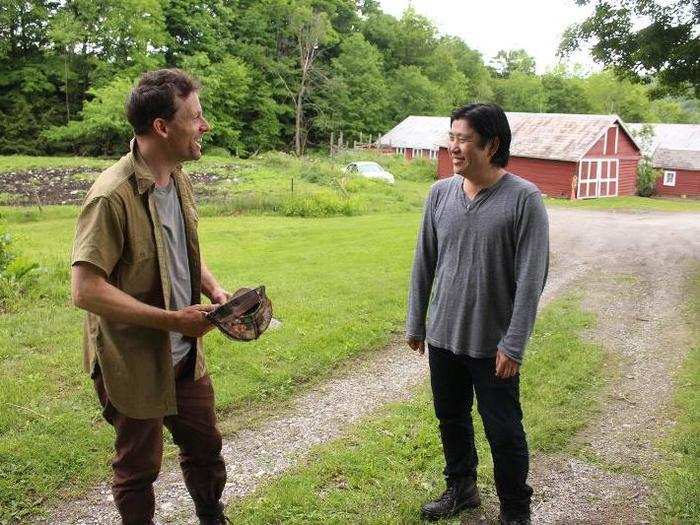
Chef Kida makes the six-hour pilgrimage from his Midtown Manhattan restaurant to central Vermont, where Strusinski is temporarily based. Weaving in and out of cell service and down country roads, Kida wonders aloud about what they might find today.
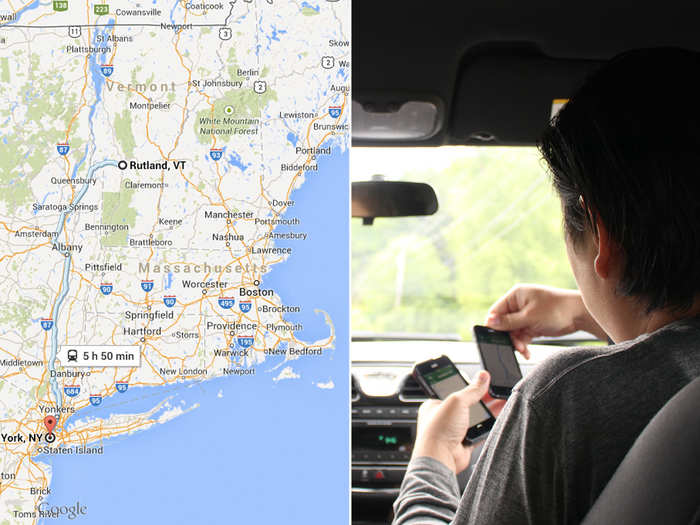
“When you’re trying to develop a particular dish, it’s helpful to see where the ingredients come from,” Kida says, adding that pairings become more instinctive and appreciation for the food grows. “You’re not going to take that precious morel mushroom and cover it in chimichurri sauce," he says.
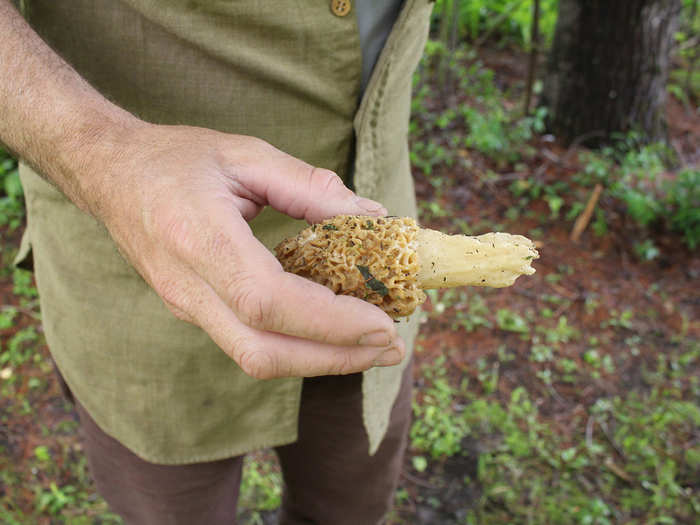
Strusinski greets him outside a red barn where he camps out for a few weeks every spring. A native of Vermont's Green Mountains and full-time forager, Strusinski migrates from Pennsylvania to Maine eight months out of the year, gathering ingredients for dozens of elite restaurants.
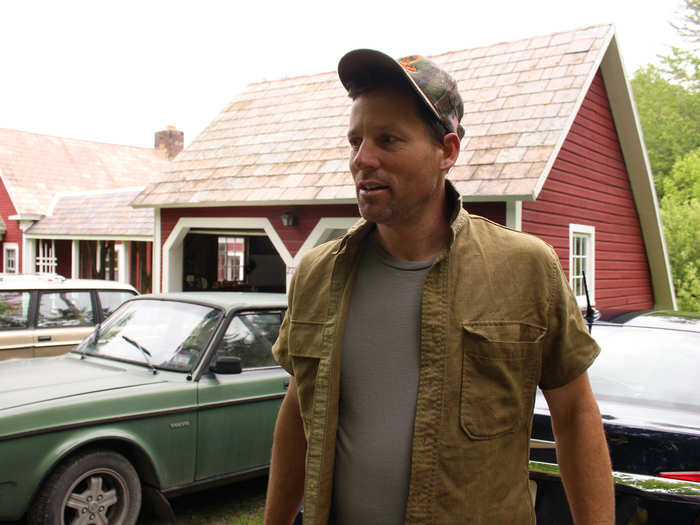
We start at a bog down the road, one of Strusinski's preferred spots for harvesting sweet flag, a type of field plant. He sells more than 300 species of plants to restaurants like The French Laundry, Gramercy Tavern, and the entire Momofuku empire, so he has to keep a tight mental catalog of places where he can expect to find ingredients in high concentration for that time of year.

After all, this is his livelihood. People hear "foraging" and think of weekenders retreating into the woods with a wicker basket in one hand and a glass of rosé in the other. "You have to be efficient," Strusinski says. "There's no wandering. I schedule my day around the things I need."
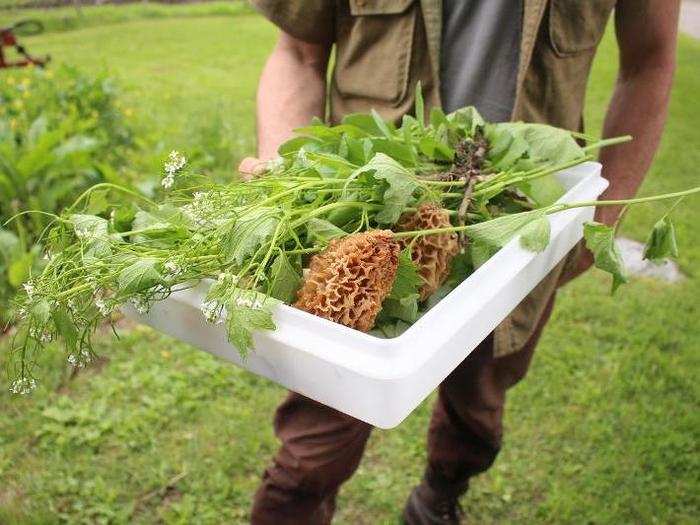
Normally, Strusinski drives his vintage Volvo 240 station wagon to the city once a week to make deliveries. But a few times a month, a client-chef will travel north to share in the experience and find inspiration.

As we walk to the bog, we cross a number of "No Trespassing" signs. Strusinski, who grew up in this town but says few locals remember him, says they hang signs not to keep people off their property, but to deter hunters from shooting there. Still, foraging regulations vary state by state, so Strusinski will often ask the homeowners for permission before picking on their property.
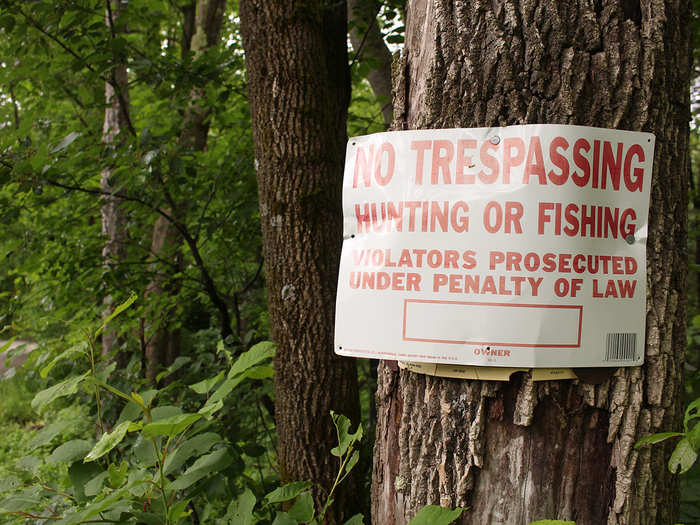
Strusinski, wearing long pants to shield his legs from poison ivy and a hat to protect his eyes from bugs and spiderwebs, rummages in the mud with his bare hands. He returns with a stalk of sweet flag, which he says was one of Henry David Thoreau's favorite plants.

Kida breathes in the aroma of the sweet flag, which feels like celery and is said to emit "the fragrance of spring," and decides he would infuse it in a broth.
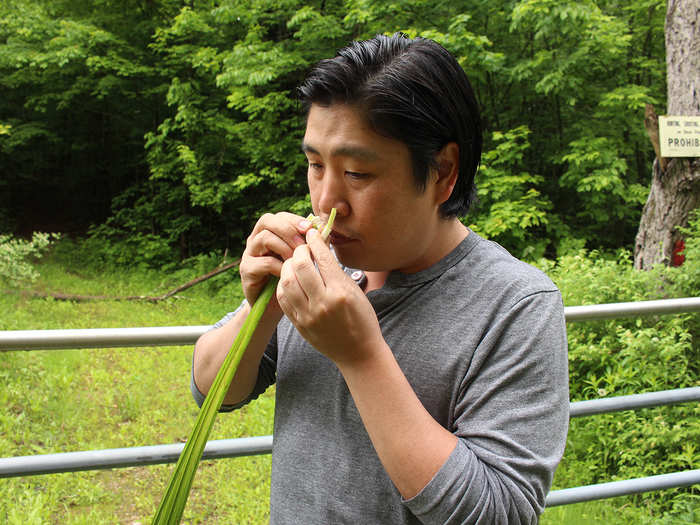
Strusinski snatches a leaf from a passing branch to dry his hands. As they walk, he touches, smells, and tastes dozens of wild plants, which passersby might never expect to be safe for consumption. The most dangerous thing he encounters in these woods is "a song that I don't particularly like, stuck in my head," he says.
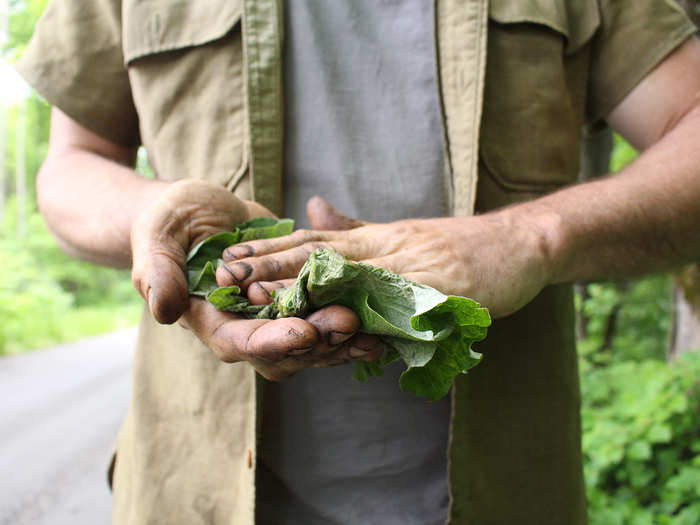
Lookalikes," or plants not suitable for eating that resemble edible plants, do exist. But it's not hard to learn the basics of foraging through field guides and books. "If you know how to find a carrot in the grocery store, you could not misidentify a chanterelle mushroom," Strusinski says. "The color is specific, the smell is absolute.

We hop in the car and drive 20 minutes to a more rural area. It's time to go after the holy grail: morel mushrooms. Strusinski says mushrooms were the "gateway drug" that got him into foraging. He spent mornings scavenging for mushrooms as a young man working at a restaurant, became intoxicated by the hunt, and decided to turn foraging into a full-time gig.

Because of their mercurial nature, they keep you guessing," Strusinski says of mushrooms. "You can go to a spot that's perfectly great for a mushroom to grow, and [strike out]. You're like, 'Ugh, bad season.' Then two days later, they're there! You missed it because you came at the exact wrong time.
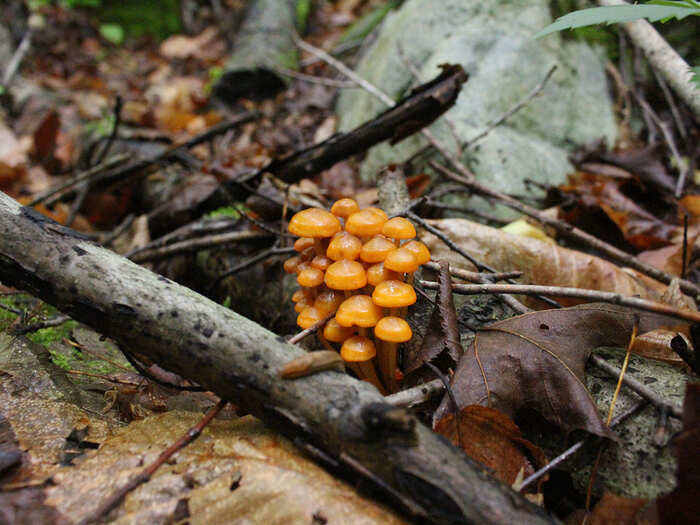
As soon as we arrive, Strusinski flings himself into the tree line. He tells us what characteristics to look for: the white foot, blonde head, and musty smell.
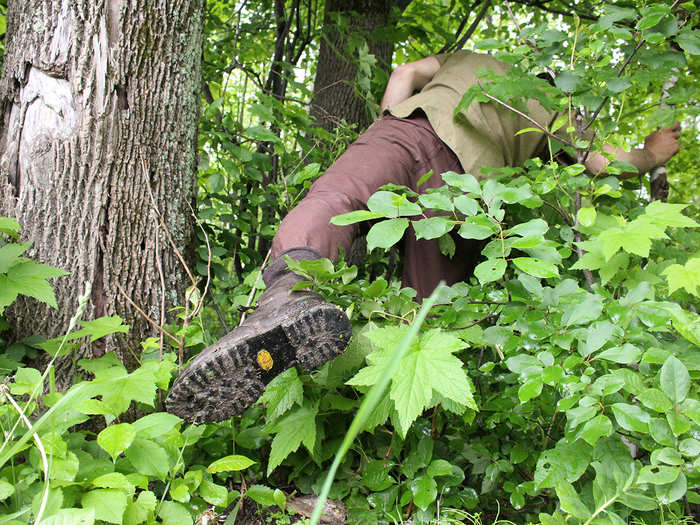
The trick to foraging, especially for morels, is to look for the parts rather than the whole. "You just scan for a certain color or certain texture. Morels are so well concealed by everything around them, that you have to spot a variation in the theme," he adds. "And then you start seeing them sort of everywhere."

"Jesus Christ! Woo!" Strusinski shouts as he swipes the clippers from his belt. The morels he has found are enormous and lead to a line of even more morels growing along an ash tree's roots. The group cheers like its team won the Super Bowl.
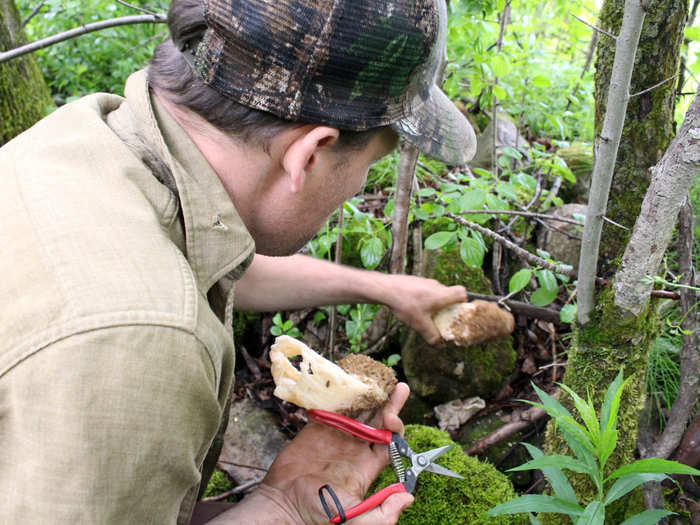
In awe, Kida turns one over in his hands and thinks about how it will taste roasted in brown butter. "If you were down in New York City, you could not pay enough to find a mushroom of this quality," he beams. "It just can’t be reproduced as well as nature does it." Fresh morels can cost as much as $45 a pound.
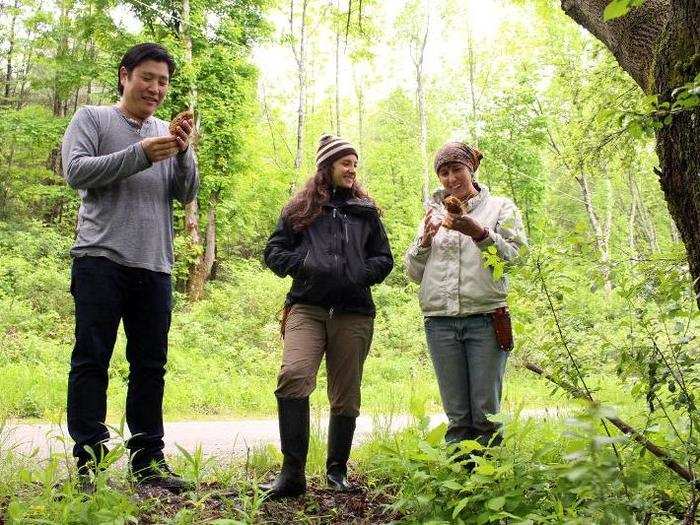
It's no surprise, then, that Strusinski is a bit paranoid about competitors: He can't afford to have recreational pickers claiming his goods. "If a car comes, ditch the basket. Not because we're trespassing, but because I don't want anyone to know about the morels," he instructs us. "Any mushroom collector worth his salt will do that kind of thing."
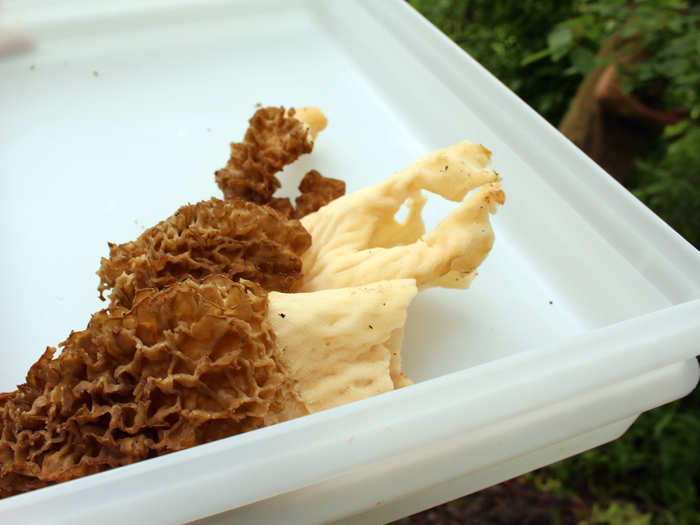
Because Strusinski travels all over the Northeast, he will sometimes flag down passing cars or knock on strangers' doors to pick their brains about an area.
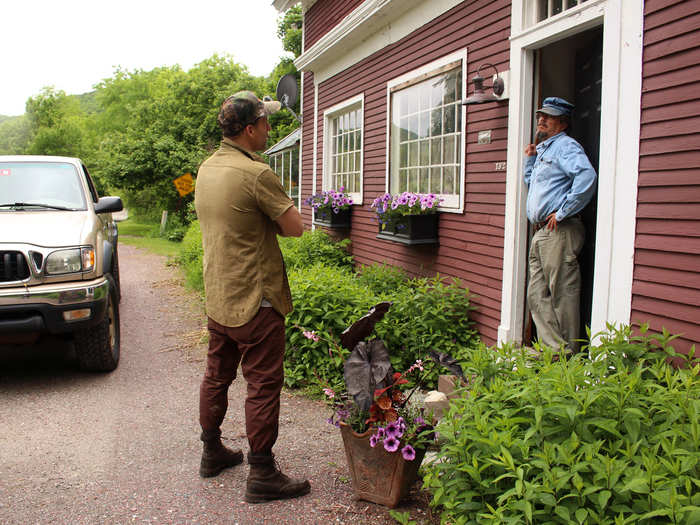
We continue to gather more common items in bulk, including bunches of garlic mustard, which Kida can sprinkle with acid or juice for an aioli. "I can’t tell you how many times that garlic mustard is put off to the side because diners think it’s garnish," Kida says. "It kills me!"
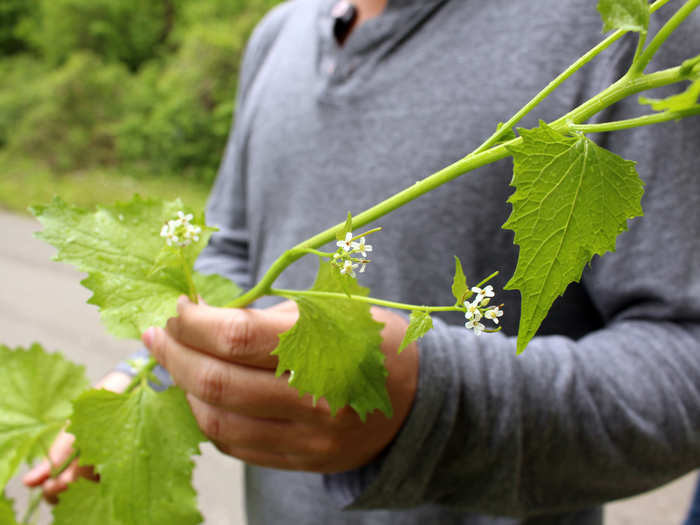
Wood sorrel, which tastes sour but can be tamed by a fatty protein, is rather tedious to find. We're in luck today and discover a patch of woods carpeted with it.
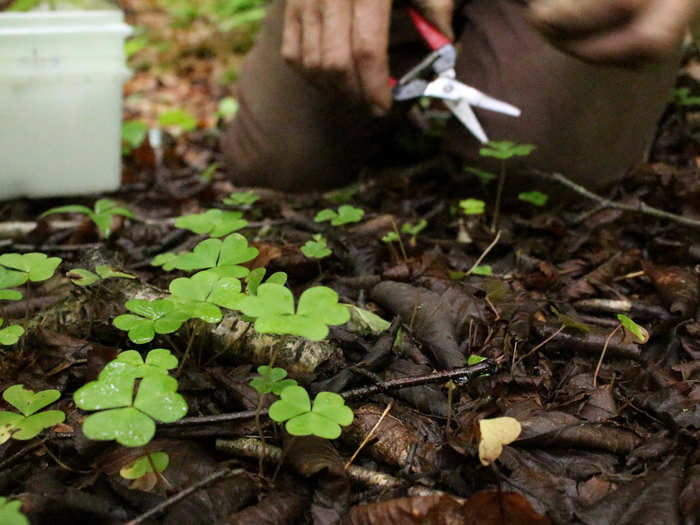
Strusinski recognizes leaves of wild ginger poking out of the ground and digs for the roots. Kida typically infuses the root into a sauce and serves it with poached or steamed white-flesh fish.
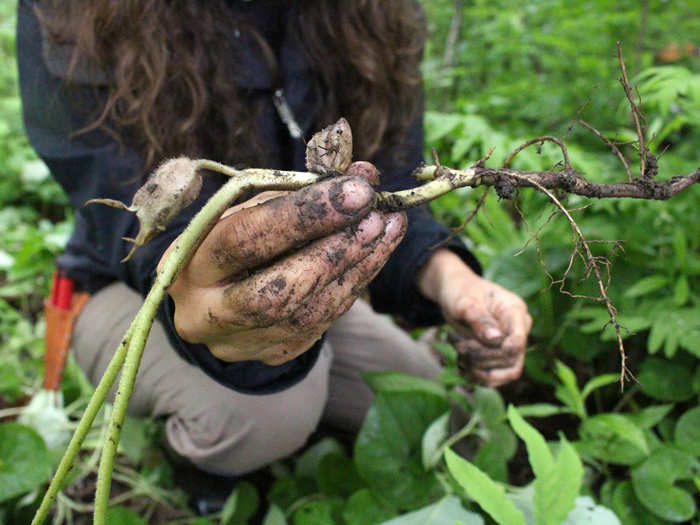
We are warned to be careful when handling angelica, a celery-like plant, because it causes photodermatitis. If you touch the inside of the stalk and expose the skin to sunlight, UV rays will discolor the skin for a couple weeks.
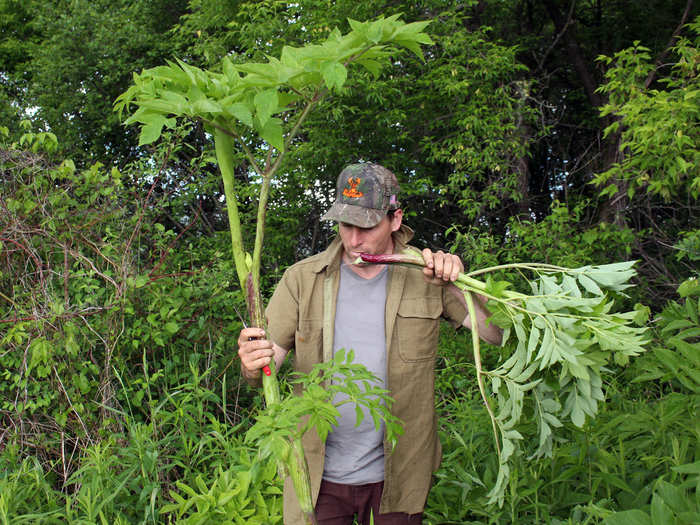
Toothwort, a cousin of horseradish, tastes unsurprisingly bitter.
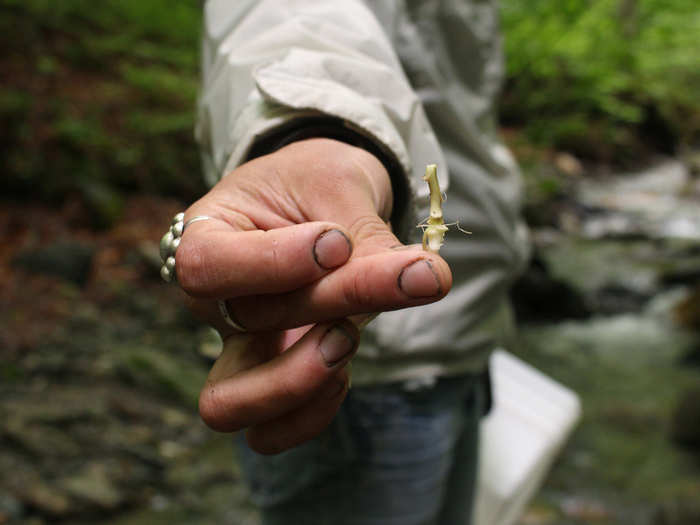
Five hours later, the crew smiles at their loot, fills the back of the Volvo, and heads to Strusinski's home base, where they'll package the ingredients for deliveries.
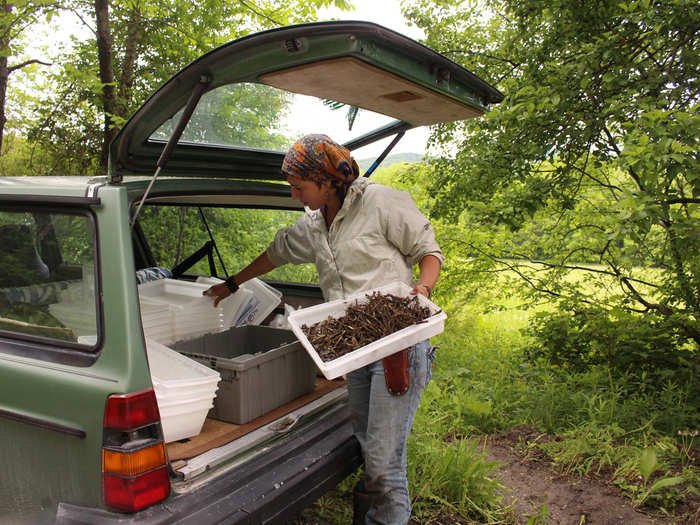
The car is pretty full, but we pull over twice more when Strusinski spots ingredients ripe for picking on the side of the road. He says a two-hour car ride can easily turn into six hours when temptation grows everywhere. His girlfriend hates driving with him for this reason.
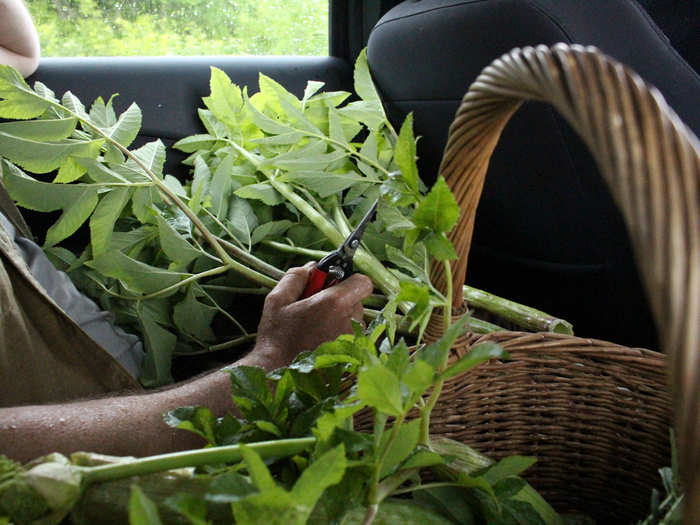
Back at the house, Strusinski carries the ingredients to a makeshift weighing station in the garage. He measures the quantity of each species and bags them.
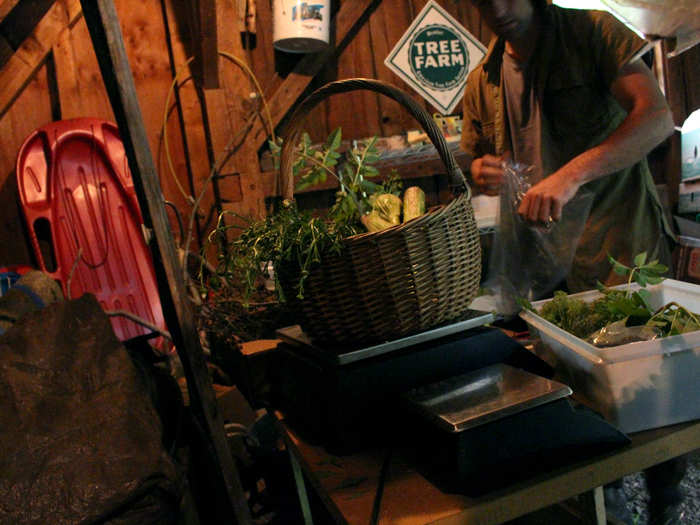
He will pack the ingredients into these large cardboard and styrofoam containers and cram them like Tetris pieces into the Volvo on delivery day. He will portion the ingredients as he hops from restaurant to restaurant.
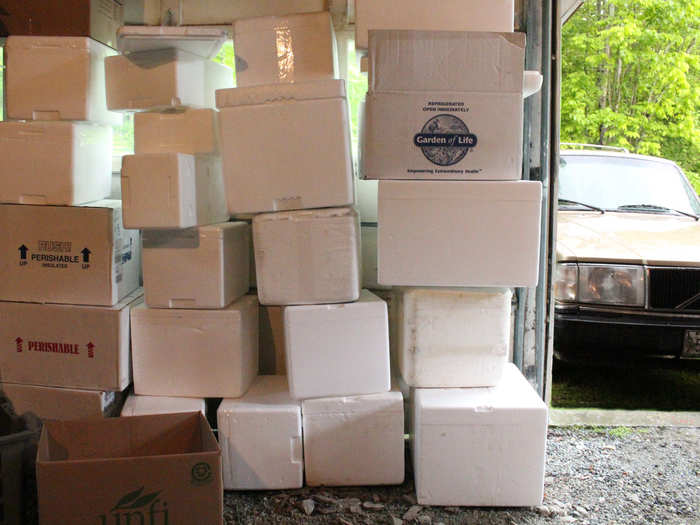
A very gleeful Kida loads his bounty — garlic mustard, garlic scapes, ramps, ginger root, angelica, daisies, and of course, morels — into the rental car.
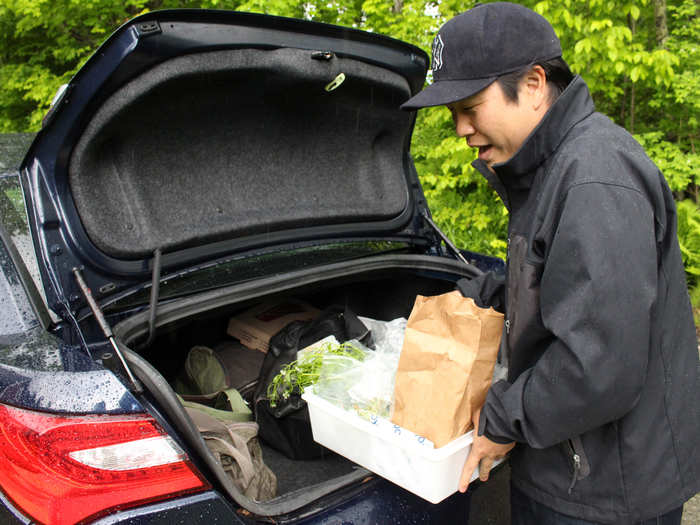
A few days later, we stop by Kida's restaurant, Clement at The Peninsula New York, to see a field-to-table meal come to fruition.

The menu at Clement changes weekly based on what's local, what's in season, and any surprises from Strusinski's travels. For the tasting menu this evening, Kida has conceptualized a black sea bass dish accented by four of the ingredients he foraged.
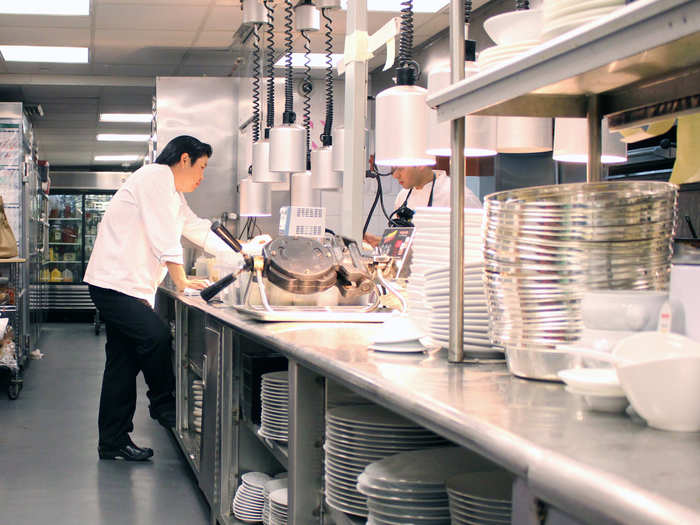
Kida retrieves the foraged ingredients, still in their bin, from a large refrigerator at the back of the kitchen. He will typically use whatever Strusinski supplies a day or two after it's delivered, for optimum freshness.
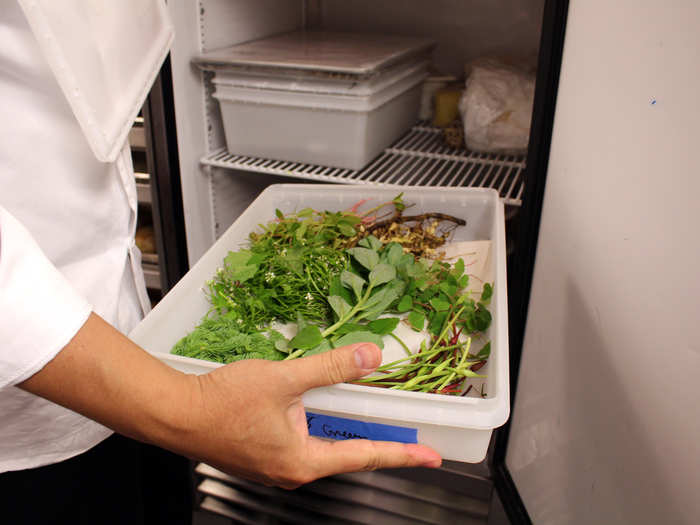
He drizzles the garlic scapes with acid to balance out the flavor, and cuts the morels into 1-inch chunks. Both are tossed into a pan and sautéed. On the back burner, garlic root steeps in a pot of broth.
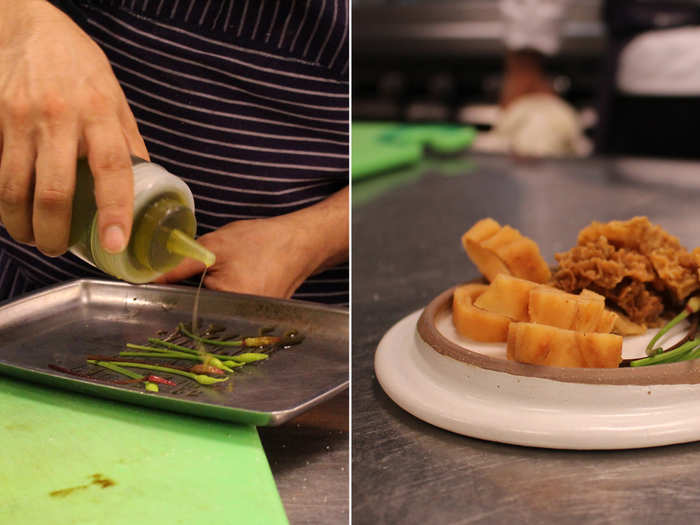
Kida pieces the dish together step by step, layering the grilled fish on a bed of greens and morels, topping it with mustard seed flowers, and muddling the ginger root in the broth. Each ingredient complements the others, heightening their nuances.
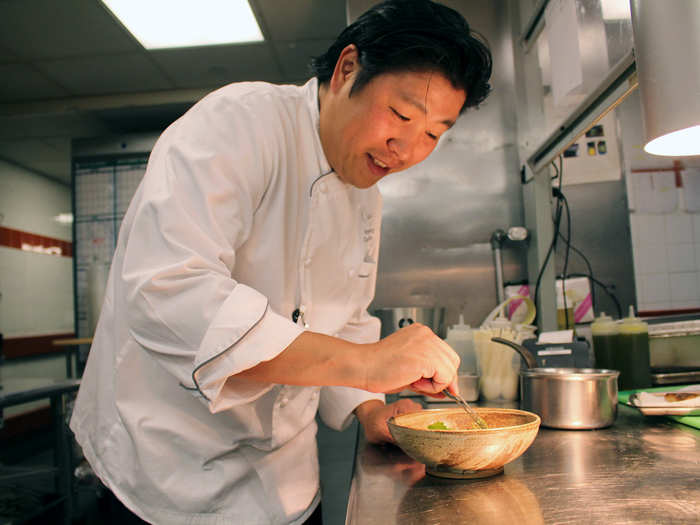
When you go cherry picking, you know exactly which ones you like — the particular color hue and all those little characteristics," Kida says. "Well, every ingredient has those shades of itself. You have to really understand what's going on with that ingredient to make it sing. And you would never know unless you knelt down, picked it, and put it in your mouth.
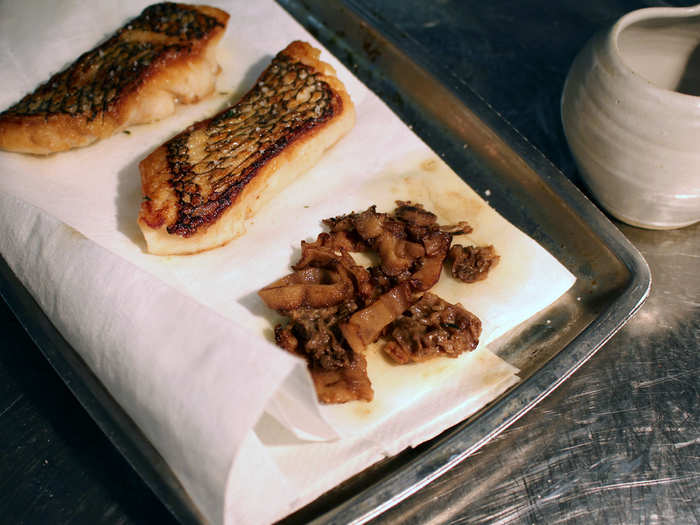
The final product takes our breath away. Every bite tastes fresher than the last, a direct result of the quality of the ingredients foraged.
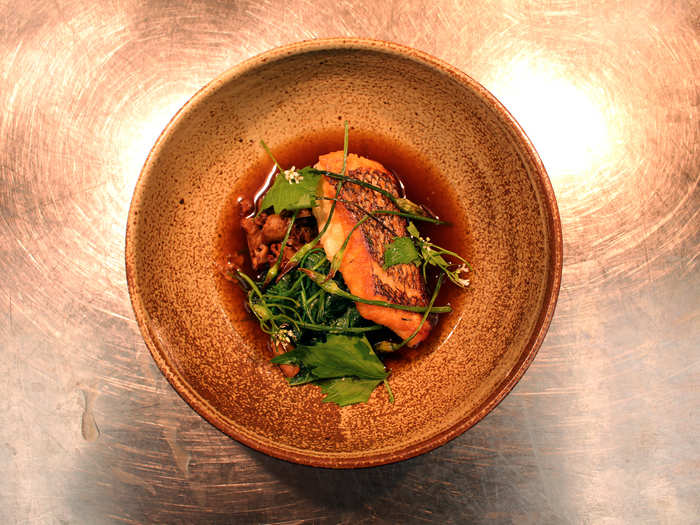
Kida is convinced foraged fare is here to stay. He asked us to imagine nibbling on a fresh daisy bud yanked from the ground or sampling ingredients straight from Mother Nature on his tasting menu. "Now imagine if I told you that you could never ever, for the remainder of your life, have that again," he says. "Once you're exposed to that world, you can't go back."
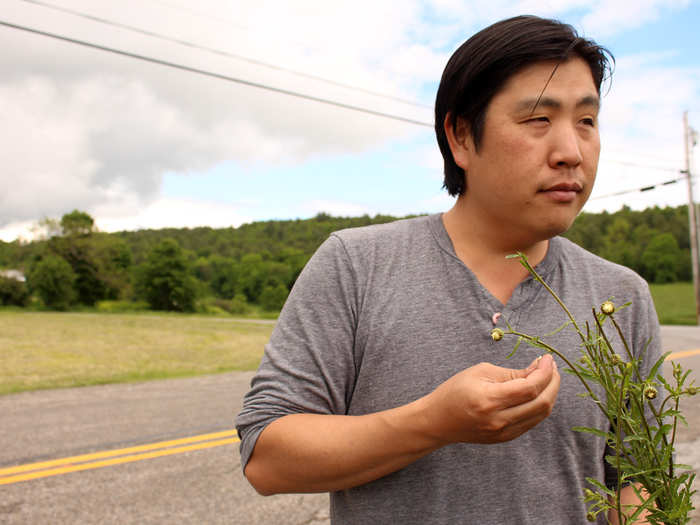
Now see what it's like to eat at the pinnacle foraged-food restaurant.
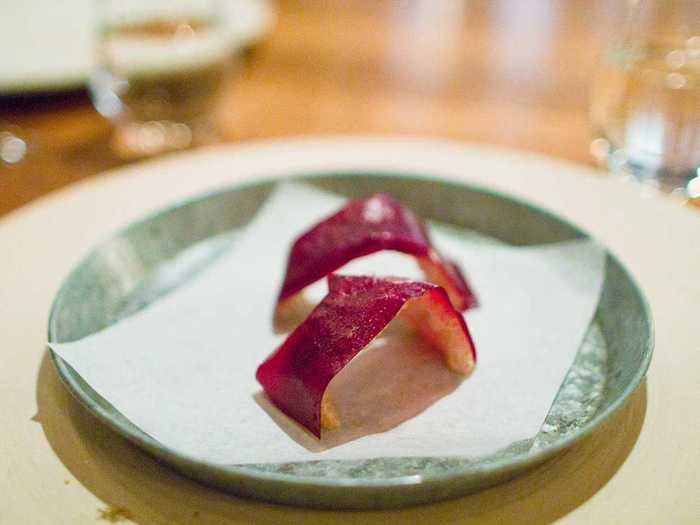
Popular Right Now
Popular Keywords
Advertisement